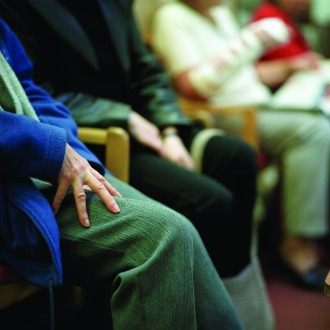GP numbers drop by 2% in blow to Government’s recruitment pledge

GP numbers decreased by an estimated 2% last year, official data have revealed, in a blow to the Government’s pledge to grow the workforce by 5,000 during this Parliament.
Figures published today by the Health and Social Care Information Centre showed that there were 34,100 full-time-equivalent GPs, excluding locums, working in GP practices in England as at 30 September 2015.
The HSCIC said this was an estimated 657 (1.9%) fewer than in 2014. When including locums, there were 34,600 full-time-equivalent GPs.
The data release also showed that in the GP practice workforce in England there were:
- 15,400 FTE nursing staff, an increase of 2.2% (336) since 2014.
- 9,150 FTE direct patient care staff, a decrease of 1.4% (129) since 2014.
- 63,700 FTE admin/non-clinical staff, 0.5% fewer (328) than 2014.
Commenting on the news, GPC workforce lead Dr Beth McCarron said: ‘Unfortunately, considering the ongoing difficulty general practice faces I’m not remotely surprised.
‘I’m surprised it’s not more because, anecdotally, I hear many reports of GPs going part time and doing other things just to try and help them cope with the intensity and complexity of their workload.
‘The idea that they’re going to find 5,000 extra doctors in the GP Forward View, it certainly doesn’t look as though doctors will be GPs in any great numbers, and that is a huge concern.’
She added that the decrease in other staff providing direct patient care was no surprise either, despite the recent policy to hire clinical pharmacists and physician associates to relieve GPs of workload.
Dr McCarron said: ‘We’ve had overwhelming cuts in our funding, so how on earth are we supposed to take on staff if we can’t afford to pay for them?’
The leader of the Government’s primary care workforce commission, Professor Martin Roland, former GP and professor of health sciences at the University of Cambridge, said: ‘If GP numbers aren’t increasing, this is very disappointing, and shows the challenge the NHS will have in reaching 5,000 extra GPs by 2020.’
A Department of Health spokesperson said: ‘We are committed to our target of 5,000 more doctors in general practice by 2020. NHS England is taking action to double the growth rate in GPs through new incentives for training, recruitment, retention and return to practice.
‘NHS England’s GP Forward View, which commits an extra £2.4 billion for general practice by 2020/21, will help to reduce the pressure on GPs and retain a healthy workforce well into the future.’
This is the first publication of data since GP practices were required to submit the Minimum Worforce Data Set since last year, which is intended to improve the reliability of the data for the future.
Although changes to the methodology mean the new figures cannot be directly compared with previous years’ publications, HSCIC has recalculated 2014 figures using the same methodology to provide accurate year-on-year comparisons, although it pointed out that these were estimates.
The pledge of 5,000 extra GPs by 2020
The news comes as a Pulse analysis revealed that the Government is a long way off its target, with best-case scenario figures showing they would recruit less than half of their target by 2020.
It also comes as Pulse revealed that the Government is hoping to bring in up to 400 GPs from India to help it reach the target.
The General Practice Forward View, published last week, confirmed plans to bring in more than 500 fully trained GPs from overseas.
In the foreword to the document, NHS England chief executive Simon Stevens said NHS England, HEE and CCGs would be ‘pulling out all the stops’ to try to boost the GP workforce by 5,000.
He said: ‘We all accept that we have a long way to go to hit the ambitious recruitment targets set for primary care, but we must use every effort to try, as this will be necessary for much of the reform required.’









